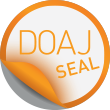Herausforderungen von multimethodischen und Mixed-Methods-Designs in der Museumsforschung
DOI:
https://doi.org/10.17169/fqs-24.1.3988Schlagworte:
Museum, Mixed Methods, Multimethodik, Zeitlichkeit, Vergleichbarkeit, Ungleichheit, Macht, Methodenaddition, Methodenintegration, SituierungAbstract
In diesem Artikel stellen wir anhand zweier Forschungsprojekte zu Museen dar, wie wir qualitative und quantitative Methoden (teilstandardisierte Interviews, nicht-standardisierte Beobachtungen, fokussierte Ethnografien, ethnografische Beobachtungen, Gespräche, standardisierte Befragungen und Beobachtungen, Inhaltsanalyse) kombiniert, welche Designs wir verwendet haben und auf welche Chancen und Herausforderungen wir gestoßen sind. Angesichts der heutigen pluralisierten Museumslandschaft ging es um die Fragen, ob und inwieweit Museen auf Erlebnisorientierung gerichtet sind und welche Rolle Museumsaufsichten über ihre Sicherheitsfunktion hinaus spielen. Wir zeigen, dass die Kombination verschiedener Methoden besonders fruchtbar sein kann, um Spannungsfelder aus unterschiedlichen Perspektiven zu untersuchen. Zum einen können wir so das (konfliktreiche) Zusammenspiel verschiedener Dimensionen (Akteur*innen, Ausstellungsästhetiken, Konzepte, Diskurse) erfassen, zum anderen können wir unsere Forschungsgegenstände und Interpretationen breit verorten. Die erste Herausforderung, die wir diskutieren, ist die Zeitlichkeit des empirischen Vorgehens einschließlich der Frage, wie lineare und iterative Ansätze sowie parallel und sequenziell ablaufende Verfahren integriert werden können. Zweitens fragen wir, inwieweit Erkenntnisse aus verschiedenen Ansätzen und Museen bei der Analyse miteinander verglichen werden können – mit Blick auf Breite oder Tiefe, die Anzahl der Museen oder unterschiedliche Dimensionen.
Downloads
Literaturhinweise
Abbott, Andrew (2001). Time matters. On theory and method. Chicago, IL: University of Chicago Press.
Alexander, Victoria D. (2020). The sociology of the arts. Exploring fine and popular forms. Hoboken, NJ: Wiley.
Barad, Karen (2007). Meeting the universe halfway. Quantum physics and the entanglement of matter and meaning. Durham: Duke University Press.
Baur, Nina (2019). Linearity vs. circularity? On some common misconceptions on the differences in the research process in qualitative and quantitative research. Frontiers in Education, 23(4), https://doi.org/10.3389/feduc.2019.00053 [Accessed: December 07, 2022].
Bennett, Tony (1995). The birth of the museum: History, theory, politics. London: Routledge.
Bourdieu, Pierre (2005 [1979]). Distinction. A social critique of the judgement of taste. Abingdon: Routledge.
Bourdieu, Pierre & Darbel, Alain (1991 [1966/1969]). The love of art: European museums and their public. Cambridge: Polity Press.
Bryman, Alan E. (2004). The disneyization of society. Thousand Oaks, CA: Sage.
Burzan, Nicole (2016). Methodenplurale Forschung. Chancen und Probleme von Mixed Methods. Weinheim: Beltz Juventa.
Burzan, Nicole & Eickelmann, Jennifer (2022). Machtverhältnisse und Interaktionen im Museum. Frankfurt/M.: Campus.
Corbin, Juliet M. & Strauss, Anselm L. (2015). Basics of qualitative research: Techniques and procedures for developing grounded theory. Thousand Oaks, CA: Sage.
Creswell, John (2015). A concise introduction to mixed methods research. Thousand Oaks, CA: Sage.
Creswell, John & Plano Clark, Vicki (2017). Designing and conducting mixed methods research. Thousand Oaks, CA: Sage.
Denzin, Norman K. (2012). Triangulation 2.0. Journal of Mixed Methods Research, 6(2), 80-88.
Eickelmann, Jennifer & Burzan, Nicole (2022). Das Museum im Spannungsfeld von musealer Deutungsmacht und Publikumsorientierung. Zur Scharnierfunktion von Museumsaufsichten. Zeitschrift für Kulturmanagement und Kulturpolitik, 8(1), 175-207.
Fielding, Nigel (2009). Going out on a limb. Postmodernism and multiple method research. Current Sociology, 57(3), 427-447.
Henning, Michelle (2006). Museums, media and cultural theory. Maidenhead: Open University Press.
Hesse-Biber, Sharlene & Johnson, R. Burke (Eds.) (2015). The Oxford handbook of multimethod and mixed methods research inquiry. Oxford: Oxford University Press.
Kirchberg, Volker & Tröndle, Martin (2015). The museum experience: Mapping the experience of fine art. The Museum Journal, 58(2), 169-193.
Knoblauch, Hubert (2005). Focused ethnography. Forum Qualitative Sozialforschung / Forum: Qualitative Social Research, 6(3). Art. 44, https://doi.org/10.17169/fqs-6.3.20 [Accessed: March 14, 2022].
Macdonald, Sharon (Ed.) (2011). A companion to museum studies. Malden, MA: Blackwell.
Macdonald, Sharon; Gerbich, Christine & Oswald, Margareta von (2018). No museum is an island: Ethnography beyond methodological containerism. Museum & Society, 16(2), 138-156, https://doi.org/10.29311/mas.v16i2.2788 [Accessed: November 11, 2022].
Mertens, Donna M. & Hesse-Biber, Sharlene (2012). Triangulation and mixed methods research: Provocative positions. Journal of Mixed Methods Research, 6(2), 75-79, https://doi.org/10.1177/1558689812437100 [Accessed: November 11, 2022].
Morgan, David L. (2019). Commentary—after triangulation, what next?. Journal of Mixed Methods Research, 13(1), 6-14, https://doi.org/10.1177/1558689818780596 [Accessed: November 11, 2022].
Nielsen, Jane K. (2017). Museum communication and storytelling: Articulating understandings within the museum structure. Museum Management and Curatorship, 32(5), 440-455.
Reitstätter, Luise & Fineder, Martina (2021). Der Ausstellungsinterviewrundgang (AIR) als Methode. Experimentelles Forschen mit Objekten am Beispiel der Wahrnehmung von Commons-Logiken. Forum Qualitative Sozialforschung / Forum: Qualitative Social Research, 22(1), Art. 6, https://doi.org/10.17169/fqs-22.1.3438 [Accessed: December 7, 2022].
Sarr, Felwine & Savoy, Bénédicte (2018). The restitution of African cultural heritage. Toward a new relational ethics. Report, https://www.unimuseum.uni-tuebingen.de/fileadmin/content/05_Forschung_Lehre/Provenienz/sarr_savoy_en.pdf [Accessed: December 7, 2022].
Schoonenboom, Judith & Johnson, R. Burke (2017). How to construct a mixed methods research design. Kölner Zeitschrift für Soziologie und Sozialpsychologie, 57, 107-131.
Tashakkori, Abbas & Teddlie, Charles (Eds.) (2010). The Sage handbook of mixed methods in social & behavioral research. Thousand Oaks, CA: Sage.
Teddlie, Charles & Tahakkori, Abbas (2009). Foundations of mixed methods research. Integrating quantitative and qualitative approaches in the social and behavioral science. Los Angeles, CA: Sage.
Uprichard, Emma & Dawney, Leila (2019). Data diffraction: Challenging data integration in mixed methods research. Journal of Mixed Methods Research, 13(1), 19-32, https://doi.org/10.1177/1558689816674650 [Accessed: November 11, 2022].
Van Maanen, John (1982). Varieties of qualitative research. Los Angeles, CA: Sage.
vom Lehn, Dirk & Heath, Christian (2016). Action at the exhibit face. Video and the analysis of social interaction in museums and galleries. Journal of Marketing Management, 32(15-16), 1441-1457.
Yin, Robert K. (2014). Case study research design and methods. Thousand Oaks, CA: Sage.
Downloads
Veröffentlicht
Zitationsvorschlag
Ausgabe
Rubrik
Lizenz
Copyright (c) 2023 Jennifer Eickelmann, Nicole Burzan

Dieses Werk steht unter der Lizenz Creative Commons Namensnennung 4.0 International.





